
XL-Trace System
Installation and Operation Manual for Pipe
Freeze Protection and Flow Maintenance

Important Safeguards and Warnings
WARNING: FIRE AND SHOCK HAZARD.
nVent RAYCHEM heat-tracing systems must be installed
correctly to ensure proper operation and to prevent
shock and fire. Read these important warnings and
carefully follow all the installation instructions.
• To minimize the danger of fire from sustained
electrical arcing if the heating cable is damaged
or improperly installed, and to comply with nVent
requirements, agency certifications, and national
electrical codes, ground-fault equipment protection
must be used on each heating cable branch circuit.
Arcing may not be stopped by conventional circuit
breakers.
• Approvals and performance are based on the use of
nVent-specified parts only. Do not substitute parts or
use vinyl electrical tape.
• Bus wires will short if they contact each other. Keep
bus wires separated.
• Connection kits and cable ends must be kept dry
before and during installation.
• The black heating cable core is conductive and can
short. It must be properly insulated and kept dry.
• Damaged bus wires can overheat or short. Do not
break bus wire strands when preparing the cable for
connection.
• Damaged heating cable can cause electrical arcing or
fire. Do not use metal attachments such as pipe straps
or tie wire. Use only nVent approved tapes and cable
ties to secure the cable to the pipe.
• Do not attempt to repair or energize damaged heating
cable. Remove damaged sections at once and replace
them with a new length using the appropriate nVent
RAYCHEM splice kit. Replace damaged connection
kits.
• Use only fire-resistant insulation materials such as
fiberglass wrap or flame-retardant foams.
Note: Pipes are shown without insulation for illustrative
purposes only. All pipe installations must be fully
covered with thermal insulation.

Table of Contents
1
General Information 1
1.1 Use of the Manual 1
1.2 XL-Trace Applications 2
1.3 Safety Guidelines 2
1.4 Approvals 3
2
Installation Guidelines 4
2.1 Heating Cable Storage 4
2.2 Pre-Installation Checks 4
2.3 Heating Cable Installation 5
2.4 Heating Cable Connections 19
3
Thermal Insulation 27
3.1 Insulating the System 27
3.2 Insulation Installation 27
4
Power Supply and Electrical Protection 30
4.1 Voltage Rating 30
4.2 Circuit Breaker Sizing 30
4.3 Electrical Loading 30
4.4 Ground-Fault Protection 30
4.5 Important Power Supply Safeguards 31
5
Control, Monitoring and Power Distribution 32
5.1 Control Systems 32
5.2 Power Distribution 35
6
Commissioning and Preventive Maintenance 38
6.1 Tests 38
7
Test Procedures 40
7.1 System Tests 40
7.2 Fault Location Tests 45
8
Troubleshooting Guide 50
9
Appendix 52
10
Installation and Inspection Records 58


nVent.com | 1
1
General Information
1.1 Use of the Manual
This manual covers the installation of nVent
RAYCHEM XL-Trace self-regulating heating
cables and connections for commercial
construction pipe systems in ordinary
(nonhazardous) areas. The manual covers
general heating cable installation procedures
and specific installation details and shows
available connection kits for the different
applications. The manual also discusses
controls, testing, and periodic maintenance.
This manual assumes that the proper heat-
tracing design has been completed according
to the Pipe Freeze Protection and Flow
Maintenance Design Guide (H55838). Only
are approved by nVent for XL-Trace systems
when used with approved nVent RAYCHEM
connection kits. The instructions in this manual
and the installation instructions included with
the connection kits, control systems, power
distribution systems, and accessories must
be followed for the nVent warranty to apply.
Contact your nVent representative for other
applications and products.
For additional information, contact:
nVent
7433 Harwin Drive
Houston, TX 77036
USA
Tel: +1.800.545.6258
Tel: +1.650.216.1526
Fax: +1.800.527.5703
Fax: +1.650.474.7711
nVent.com

1
General Information
2 | nVent.com
1.2 XL-Trace Applications
XL-Trace heat-tracing systems are approved and
qualified for the applications listed below.
Freeze protection
• General water piping. Freeze protection (40°F
(4°C) maintain) of insulated metallic or plastic
water piping.
• Sprinkler piping systems. Freeze protection
(40°F (4°C) maintain) of insulated metallic
standpipes and supply piping up to 20".
Flow maintenance
• Greasy waste lines. Flow maintenance (110°F
(43°C) maintain) of insulated-grease disposal
lines.
• Fuel lines. Flow maintenance (40°F (4°C)
maintain) for insulated metallic piping
containing #2 fuel oil.
For heating cable applications other than
those listed above, please see your nVent
representative or call nVent at (800) 545-6258.
1.3 Safety Guidelines
As with any electrical equipment, the safety
and reliability of any system depends on the
quality of the products selected and the manner
in which they are installed and maintained.
Incorrect design, handling, installation, or
maintenance of any of the system connection
kits could damage the system and may result in
inadequate performance, overheating, electric
shock, or fire. To minimize these risks and to
ensure that the system performs reliably, read
and carefully follow the information, warnings,
and instructions in this guide.
Pay special attention to the following:
• Important instructions are marked
Important
• Warnings are marked WARNING

nVent.com | 3
1
General Information
1.4 Approvals
XL-Trace heat-tracing systems carry agency
approvals for the different applications shown in
approvals are carried for the specific application,
refer to the Pipe Freeze Protection and Flow
Maintenance design guide (H55838).
Warranty
nVent standard limited warranty applies to all
products.
An extension of the limited warranty period to
ten (10) years from the date of installation is
available if a properly completed online warranty
form is submitted within thirty (30) days from the
date of installation. You can access the complete
warranty on our web site at nVent.com.

2
Installation Guidelines
nVent.com | 5
4 | nVent.com
2.1 Heating Cable Storage
• Store the heating cable in a clean, dry loca-
tion. Temperature range: 0°F (–18°C) to 140°F
(60°C).
• Protect the heating cable from mechanical
damage.
2.2 Pre-Installation Checks
Check materials received
Power output (W/ft)
Product family
Voltage 1 = 120 Vac (only available for 5 or 8)
2 = 208–277 Vac (available for 5, 8, or 12)
Jacket type: Polyolefin or
Fluoropolymer
(Required for grease and fuel lines)
Catalog number: 5, 8 or 12 XL — 1 or 2 -CR -CT
Figure 1: XL-Trace catalog number
• Review the heating cable design and compare
the list of materials to the catalog numbers
of the heating cables and connection kits
received to confirm that the proper materials
are on site. The heating cable type is printed
on its jacket.
• Ensure that the service voltage available
is correct for the XL-Trace heating cable
selection.
• Inspect the heating cable and connection kits
to ensure there is no in-transit damage.
• Verify the system design does not exceed
the maximum exposure temperature of the
heating cable 5XL/8XL: 150°F (65°C) 12XL:
185°F (85°C)
• Verify that the heating cable jackets are
not damaged by conducting the insulation
resistance test (refer to Section 7) on each
reel of heating cable. Do not power the
heating cable when it’s on the reel.

2
Installation Guidelines
nVent.com | 5
4 | nVent.com
Check piping to be traced
• Make sure all mechanical pipe testing (i.e.
hydrostatic testing/purging) is complete and
the system has been cleared by the client for
tracing.
• Walk the system and plan the routing of the
heating cable on the pipe.
• Inspect the piping and remove any burrs,
rough surfaces, or sharp edges.
2.3 Heating Cable Installation
Minimum installation temperature of: 0°F
(–18°C).
Heating cable installation involves three basic
steps:
1. Paying out the heating cable
2. Attaching the heating cable to the pipe
3. Wrapping heat sinks
Paying out the heating cable
Mount the reel on a holder and place it near
either end of the pipe run to be traced. Use a reel
holder that pays out smoothly with little tension
as shown in Figure 2. Avoid jerking the heating
cable while pulling.
Pay out the heating cable and loosely string
it along the pipe, making sure the heating
cable is always next to the pipe when crossing
obstacles. If the heating cable is on the wrong
side of a crossing pipe or I-beam, you will have to
reinstall it or cut and splice it.

2
Installation Guidelines
nVent.com | 7
6 | nVent.com
Figure 2: Paying out the heating cable
When paying out the heating cable, AVOID:
• Sharp edges
• Excessive pulling force or jerking
• Kinking or crushing
• Walking on or running over the heating cable
with equipment
WARNING: Fire and shock hazard. Do not
install damaged heating cable. Connection kits
and heating cable ends must be kept dry before
and during installation.
Attaching the heating cable
Once the heating cable has been run for the
entire section, begin fastening it to the pipe.
Start at the end and work toward the reel. The
additional heating cable required for valves and
other heat sinks is shown in Table 1 and Table 2.
Refer to Table 3 for the additional heating cable
required for connection kits. The heating cable
may be installed in single or in multiple runs as
required by the design.

2
Installation Guidelines
nVent.com | 7
6 | nVent.com
Figure 3: Attaching the heating cable

2
Installation Guidelines
nVent.com | 9
8 | nVent.com
TABLE 1: ADDITIONAL HEATING CABLE FOR VALVES
Pipe diameter (IPS) Heating cable in feet (meters)
1/2 0.8 (0.24)
3/4 1.3 (0.4)
1 2.0 (0.6)
1-1/4 3.3 (1.1)
1-1/2 4.3 (1.3)
2 4.3 (1.3)
3 4.3 (1.3)
4 4.3 (1.3)
6 5.0 (1.5)
8 5.0 (1.5)
10 5.6 (1.7)
12 5.9 (1.9)
14 7.3 (2.2)
18 9.4 (2.9)
20 10.5 (3.2)
TABLE 2: ADDITIONAL HEATING CABLE FOR PIPE
SUPPORTS AND FLANGES
Support Additional heating cable
Pipe hangers (insulated) No additional heating cable
Pipe hangers noninsulated
and U-bolt supports:
Add 2x pipe diameter
Welded support shoes Add 3x the length of the shoe
Flanges Add 2x pipe diameter
Note: For applications where more than one heating cable
is required per foot of pipe, this correction factor applies for
each heating cable run.

2
Installation Guidelines
nVent.com | 9
8 | nVent.com
• Run insulation through the pipe hanger
ensuring that the pipe is not resting on the
heater.
Heating cable
Heating cable
beneath
insulation
and pipe hanger
Heating cable
over pipe hanger
Pipe hanger
under insulation
Pipe hanger
over insulation
Insulation over
pipe hanger
Heating cable
Figure 4: Pipe hanger with heating cable
Figure 5: Single pipe floor penetration
• When making floor or wall penetrations,
make sure the hole is large enough to
accommodate the pipe and the thermal
insulation. When sealing around pipes at floor
penetrations, avoid damaging or cutting the
heating cable, or pinching it between the pipe
and the concrete.

2
Installation Guidelines
nVent.com | 11
10 | nVent.com
• The heating cable must not be embedded
directly in the sealing material; the pipe should
have thermal insulation over it (if allowed
by local codes) or the heating cable should
be run through the penetration in a tube or
conduit. If the conduit must be sealed, use a
pliable fire-resistant material (Dow Corning
Fire Stop, 3M Fire Barrier, or T&B Flame-Safe)
that can be removed if necessary.
Figure 6: Multiple pipe floor penetration
• On vertical piping groups, run the heating
cable along the inside of the pipe close to
other pipes so it will not be damaged if the
pipe hits the side of the floor penetration.
Run the heating cable over the outside of the
pipe support. Do not clamp the heating cable
to the pipe with the pipe support.
• In high-rise construction it may be necessary
to install the XL-Trace system 10 or 12 floors
at a time to fit into the construction schedule.
If so, the end of the heating cable should be
sealed with a RayClic-E end seal and placed
in an accessible location. This allows testing
of one part of the heating cable at a time, and
allows splicing it to another section when the
system is complete.
• When XL-Trace is installed behind walls, the
power connection kit must be accessible.
Whenever possible, position the heating cable
on the lower section of the pipe as shown in
Figure 7 to protect it from damage.

2
Installation Guidelines
nVent.com | 11
10 | nVent.com
One heating cable
45°
45° 45°
Two heating cables
Figure 7: Positioning the heating cable
Securing the heating cable
WARNING: Damage to the heating cable
can cause electrical arcing or fire. Do not use
metal attachments such as pipe straps or tie
wire. Use only nVent-approved tapes or plastic
cable ties.
Important: Before taping the heating cable
to the pipe, make sure all heat-tracing allowances
for flanges, valves, supports, and other connection
kits have been verified.
Use one of the following attachment methods to
secure the heating cable onto the pipe: GT-66 or
GS-54 glass cloth tape, AT-180 aluminum tape,
or plastic cable ties.
glass cloth adhesive tape
• GT-66 (66-foot roll) general-purpose tape for
installation at 40°F (4°C) and above. Apply at
1-foot intervals.
• GS-54 (54-foot roll) general-purpose tape for
installation below 40°F (4°C). Apply at 1-foot
intervals.
AT-180 aluminum tape
• Required for plastic pipe applications to
ensure proper power output of heating cable.

2
Installation Guidelines
nVent.com | 13
12 | nVent.com
• Tape lengthwise over the heating cable
as required by the design drawing or
specification (see Figure 8).
• Recommended for heat-tracing pump bodies
or odd-shaped equipment, or as called out in
the design drawing as a heat-transfer aid.
• Install at temperatures above 32°F (0°C).
Heating cable
1 ft (0.3 m)
Pipe
Weather proofing
Glass cloth tape
AT-180 aluminum tape
over heating cable
(Required for proper
output for plastic
pipe applications)
Heating
cable
PipeAT-180
aluminum tape
Thermal insulation
Figure 8: Attaching the heating cable
cable ties
• Recommended in applications where the pipe
surface prevents proper tape adhesion.
• Use plastic cable ties only.
• Cable ties must be hand-tightened only to
prevent damage to heating cable!
Bending/Crossing/Cutting the Heating Cable
bending the heating cable
When positioning the heating cable on the pipe,
do not bend tighter than 1/2" radius. The heating
cable does not bend easily in the flat plane. Do
not force such a bend, as the heating cable will
be damaged.

2
Installation Guidelines
nVent.com | 13
12 | nVent.com
1/2"
Figure 9: Bending technique
crossing the heating cable
XL-Trace heating cables are self-regulating and
may be overlapped whenever necessary without
overheating or burning out.
cutting the heating cable
Cut the heating cable to the desired length after
it is attached to the pipe. XL-Trace can be cut to
length without affecting the heat output per foot.
Wrapping the Heat Sinks
Once the straight sections are secured the
heating cable can be secured to the heat sinks.
Attach the heating cable to the heat sinks
according to Figure 10 below. The length of
heating cable installed is determined in the
design.

2
Installation Guidelines
nVent.com | 15
14 | nVent.com
Valve body
Multiple crossovers allowed
for self-regulating cables
Single crossover only, allowed
for power-limiting cables
Glass tape
Pipe
Heating cable
Pipe
Heating cable
Note: Cable loop length
varies depending on
heat loss.
Figure 10: Valve
Glass tape
(typical)
Heating cable
Loop length is twice
the diameter of the pipe
Figure 11: Flange

2
Installation Guidelines
nVent.com | 15
14 | nVent.com
Heating cable
Glass tape
Pipe
Figure 12: Pressure gauge
Glass tape
Pump discharge
Pump body
Heating cable
Pump
suction
Use AT-180
tape
Motor
To power connection
Figure 13: Split case centrifugal pump

2
Installation Guidelines
nVent.com | 17
16 | nVent.com
Heating cable secured to pipe
Glass tape
Heating cable loop
Pipe
Support shoe
Figure 14: Pipe support shoe
Heating cable
Glass tape
(typical)
For pipe diameters of 2"
and larger, the heating
cable should be installed
on the outside (long)
radius of the elbow.
Figure 15: Elbow
Page is loading ...
Page is loading ...
Page is loading ...
Page is loading ...
Page is loading ...
Page is loading ...
Page is loading ...
Page is loading ...
Page is loading ...
Page is loading ...
Page is loading ...
Page is loading ...
Page is loading ...
Page is loading ...
Page is loading ...
Page is loading ...
Page is loading ...
Page is loading ...
Page is loading ...
Page is loading ...
Page is loading ...
Page is loading ...
Page is loading ...
Page is loading ...
Page is loading ...
Page is loading ...
Page is loading ...
Page is loading ...
Page is loading ...
Page is loading ...
Page is loading ...
Page is loading ...
Page is loading ...
Page is loading ...
Page is loading ...
Page is loading ...
Page is loading ...
Page is loading ...
Page is loading ...
Page is loading ...
Page is loading ...
Page is loading ...
Page is loading ...
Page is loading ...
Page is loading ...
Page is loading ...
-
 1
1
-
 2
2
-
 3
3
-
 4
4
-
 5
5
-
 6
6
-
 7
7
-
 8
8
-
 9
9
-
 10
10
-
 11
11
-
 12
12
-
 13
13
-
 14
14
-
 15
15
-
 16
16
-
 17
17
-
 18
18
-
 19
19
-
 20
20
-
 21
21
-
 22
22
-
 23
23
-
 24
24
-
 25
25
-
 26
26
-
 27
27
-
 28
28
-
 29
29
-
 30
30
-
 31
31
-
 32
32
-
 33
33
-
 34
34
-
 35
35
-
 36
36
-
 37
37
-
 38
38
-
 39
39
-
 40
40
-
 41
41
-
 42
42
-
 43
43
-
 44
44
-
 45
45
-
 46
46
-
 47
47
-
 48
48
-
 49
49
-
 50
50
-
 51
51
-
 52
52
-
 53
53
-
 54
54
-
 55
55
-
 56
56
-
 57
57
-
 58
58
-
 59
59
-
 60
60
-
 61
61
-
 62
62
-
 63
63
-
 64
64
-
 65
65
-
 66
66
Raychem Système XL-Trace Installation guide
- Type
- Installation guide
- This manual is also suitable for
Ask a question and I''ll find the answer in the document
Finding information in a document is now easier with AI
Related papers
-
Raychem Système HWAT Installation guide
-
Raychem IceStop System Installation guide
-
Raychem Raychem RTD-200 Installation guide
-
Raychem EC-TS Installation guide
-
Raychem ECW-GF Installation guide
-
Raychem AMC-2B-2 Installation guide
-
Raychem AMC-1A Installation guide
-
Raychem Raychem RayClic-T Tee Kit Installation guide
-
Raychem AMC-F5 Installation guide
-
Raychem 465 Controller Installation guide
Other documents
-
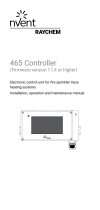 nvent RAYCHEM 465 Electronic Controller for Heat Tracing User manual
nvent RAYCHEM 465 Electronic Controller for Heat Tracing User manual
-
JONARD TOOLS MF-5-25 Operating instructions
-
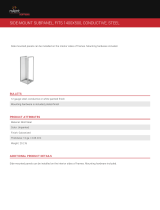 nVent Hoffman Side-Mount Subpanel Fits 1400×500 Conductive Steel Operating instructions
nVent Hoffman Side-Mount Subpanel Fits 1400×500 Conductive Steel Operating instructions
-
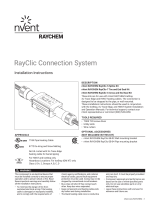 nVent RAYCHEM RayClic Connection System User guide
nVent RAYCHEM RayClic Connection System User guide
-
Lux Products Thermostat LV11 User manual
-
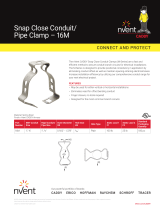 nVent CADDY 16M Snap Close Conduit Pipe Clamp Owner's manual
nVent CADDY 16M Snap Close Conduit Pipe Clamp Owner's manual
-
EasyHeat SR, TSR, HSR and HW Series Heating Cables, 14030-001 Owner's manual
-
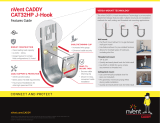 nvent CADDY CAT32HP Operating instructions
nvent CADDY CAT32HP Operating instructions
-
nVent Hoffman Cleantray 90-Degree Elbow Top Cover Sloped Inward Operating instructions
-
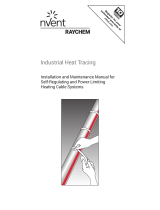 nvent RAYCHEM BTV Installation and Maintenance Manual
nvent RAYCHEM BTV Installation and Maintenance Manual







































































